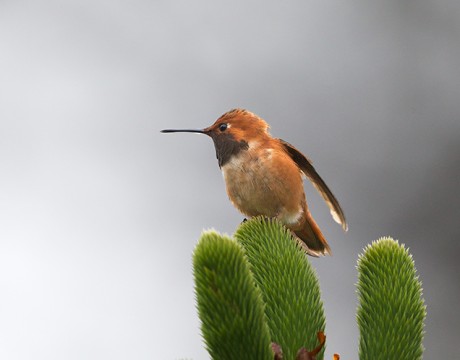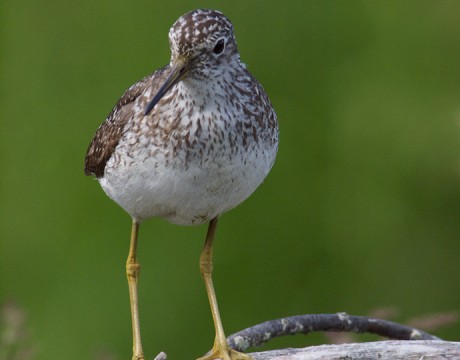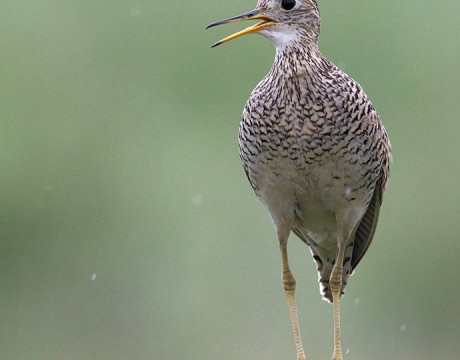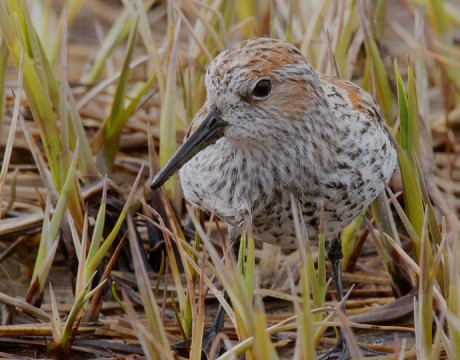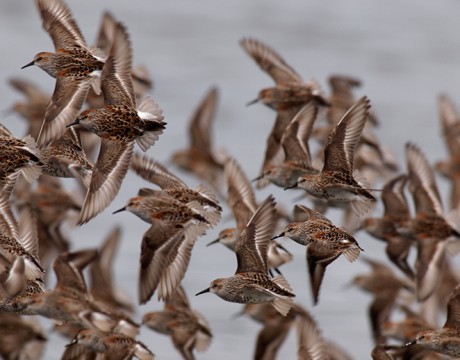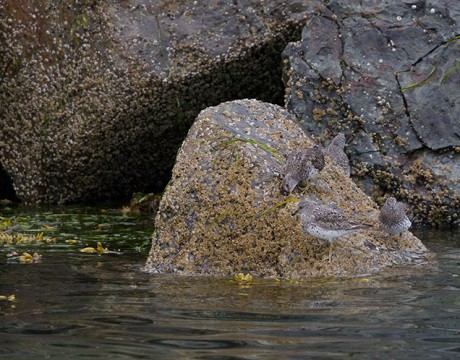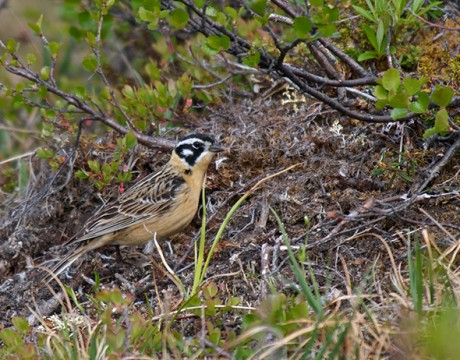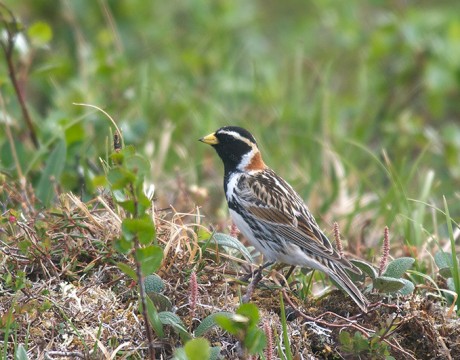Bird of the Week – Lesser Yellowlegs
The signature shore bird of the boreal forest might be the Lesser Yellowlegs. William Rowan got it exactly right when he wrote, “They will be perched there as though the safety of the entire universe depended on the amount of noise they made.”Lesser Yellowlegs provide biparental care to its kids but the females tend to depart breeding areas before chicks can fly, thus leaving males to defend the young until fledging. Whether it is one bird or two, they are noisy, with the distinctive tu tu tu calls. Even if it weren’t for the call the bright yellow legs that gives these birds their…
Bird of the Week – Spotted Sandpiper
We’re back to the peeps, the sandpipers. It doesn’t take many weeks to see all of Alaska’s hummingbirds, after all. But there are lots and lots of shorebirds. The Spotted Sandpiper is fairly common in Alaska. The signature spots are only present during breeding season. But the Spottie also has a distinct, teetering or rocking behavior that makes it pretty easy to recognize in the field, even after it loses its spots. Spotted Sandpipers are among a small minority of birds that have reversed sex roles; i.e., females are more aggressive and active in courtship than males, and males take the…
Bird of the Week: Rufous Hummingbird
We’ll take a break from the pesky shorebirds and take a moment to look at one of nature’s marvels. Just one of the 338 known hummingbird species breeds in Alaska, the Rufous Hummingbird. The Rufous Hummingbird is nothing less than astonishing. This tiny little 3.5 gram bird migrates thousands of kilometers, from the shores of Cook Inlet to northern Mexico. If you don’t find that amazing, your sense of wonder must be lost. The female builds the nest and in just a few days after arriving, lays and starts incubating eggs. Three weeks later, the kids are fledged and after building fat…
Bird of the Week: Solitary Sandpiper
Another sandpiper that doesn’t have much to do with sand, the Solitary Sandpiper nests in trees in the boreal forest. There aren’t many tree-nesting sandpipers, which makes the Solitary pretty unique. It gets its name because it’s different in another way, too: it migrates alone, not in a flock. This is a slender, fairly small, dark sandpiper, about 8 inches long. Its upper parts are dark olive-brown, finely spotted with whitish-buff to cinnamon-white. It has a white throat and belly, yellow legs and that distinctive narrow white eye-ring. The bird’s dark underwings contrast with white belly in flight. Camera geek stuff:…
Bird of the Week: Upland Sandpiper
The Upland Sandpiper is a little different. Unlike most shorebirds, the Upland Sandpiper has only incidental contact with the shore. It spends its winters on the grasslands of South America and its summers on the grasslands of North America, including the fields of the Delta Agricultural Project, southeast of Delta Junction. Uppies have an amazing call, exactly a wolf whistle. This fellow was, literally, singing in the rain. This is a bigger sandpiper, 12 inches tall. The large, dark eye in a small head and the long, pale yellow legs make this an easy identification, even if he isn’t singing…
Bird of the Week: Semipalmated Sandpiper
Even birders struggle to distinguish Semipalmated Sandpipers from Western Sandpipers. Generally, Semipalmateds are paler than Westerns, less rufous in coloration. The bill is a bit blunter. But Semipalmateds can be pretty rufous, and generally sandpipers’ bills are probing the mud, making comparison tough. As WC said, it’s a tough identification in the field. This photo catches a field mark that is quite hard to see in the field but definitive: note the webbing between the toes. That’s the “semipalmated” business in the bird’s name. This is another photo taken while laid out flat in the Hartney Bay mud. WC would…
Bird of the Week: Western Sandpiper
We’re continuing with the hard ones, the sandpipers. This week it’s Alaska’s most common peep, the Western Sandpiper. Truly spectacular numbers of Western Sandpipers move through southcentral Alaska in spring migration. This flock was photographed at the Copper River Shorebird Festival in Cordova, Alaska. The birds hang out in Hartney Bay to re-fuel, foraging for in the mud and resting. This shot was taken by WC while prone in the mud of Hartney Bay. Not a task for those of a delicate sensibility. Camera geek stuff: f5.7, 1/400, ISO200. For more bird photos, please visit Frozen Feather Images.
Bird of the Week: Rock Sandpiper
You’ve seen a lot of sparrows, the Little Brown Jobs or LBJs of birding, and they are admittedly hard to identify in the field. Now, let’s spend some time with birds that are even harder: sandpipers, the peeps of the birding world. Rock Sandpipers winter on the rocky shores and breakwaters of the Pacific Northwest and Alaska. But they breed on the Bering Sea Coast, mostly on mudflats and intertidal zones, which kind of makes you scratch your head about the species common name. Most sandpipers are cryptic, quite hard to see in their environment. Rock Sandpipers are a champion…
Bird of the Week – Smith’s Longspur
The bird species in Alaska that WC has probably worked hardest to photograph is the Smith’s Longspur. Uncommon, highly localized and skulky, WC has spent days and hiked miles to photograph these birds. It’s worth it, too. Besides everything else, the species is easily disturbed, so WC will be vague about where to find it. In addition to being difficult to find and photograph, Birds of North America notes another unusual characteristic: Smith’s Longspurs have one of the most unusual social breeding systems known among songbirds. Unlike the majority of birds that form socially monogamous relationships for breeding, Smith’s Longspurs are…
Bird of the Week – Lapland Longspur
The Lapland Longspur is an exceedingly common species of the alpine and coastal tundra in Alaska. During courtship, its call and incessant fluttering mating flight can drive a birder to distraction. But it is also an exceedingly handsome species, especially a male in breeding plumage. Longspurs take their name from the long back toe that’s characteristic of the genus. After egg laying, you see males far more often than females, as they skillfully lead you away from the nests. Not a sparrow, but a cousin to a sparrow. Camera geek stuff: f5.7, 1/250, ISO250. For more bird photos, please visit Frozen…







